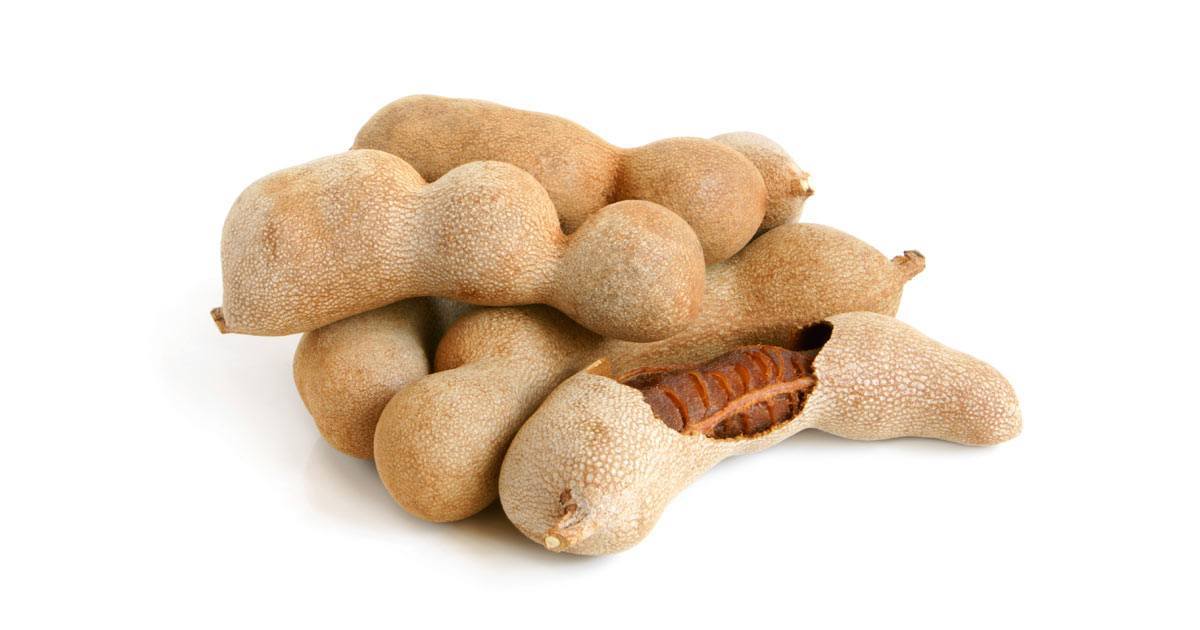
Tamarind is a very well known herb having many uses such as culinary, medicinal, ornamental uses and as an economic dye. Its botanical name is Tamarindus indica. The name derives from Arabic tamr-hindī, meaning “date of India”.
In Sanskrit, it is called tintiDi, in Hindi it is called imli, in Marathi and Konkani the chinch. In Sri Lanka in Sinhala call it the siyambala; and Northern areas in Tamil also as the puli.
Tamarind is included in daily diet as it has many health benefits that are sure to keep you healthy or improve you overall health. Tamarind fruit is carefully gathered and the pulp is separately collected and stored. The pulp, bark, and leaves from the tree can be converted to teas and strong tinctures, which have also shown the ability to eliminate fluorides through the urine. Based on human study, tamarind intake may delay the progression of fluorosis by enhancing excretion of fluoride. However, additional research is needed to confirm these results.
It is commonly used in the preparation of curries and chutneys.The unripe fruit is acid in taste, whereas the pulp of the ripe fruit is both sweet and acid and is cooling, carminative, digestive and laxative. It is anti-bilious and anti-scorbutic.
The leaves and seeds are astringent. Tender leaves and flowers have a cooling effect. The bark is astringent and serves as a tonic. According to ayurvedic theory, our diet should include all the six tastes – sweet, sour, pungent, acid, bitter and astringent, tamarind supplies the acid-sweet tastes.
Medicinal benefits:
In medicine, the pulp of the fruit, seeds, leaves, flowers and the bark are all used. The power of tamarind lies in its antibacterial properties. Tamarind is used as an Ayurvedic medicine for gastric problem, digestion problems and cardio protective activity.
- In summer elixir type syrup is prepared from it, which is very cooling and anti-bilious. It is known to be a cholesterol reducing agent. In the ancient Indian texts, it has been described as a fever reducer. In Indonesia, Malaysia and Philippines and Javanese traditional medicine use asem leaves as a herbal infusion for malarial fever Tamarind leaves are used in herbal tea for reducing malaria fever.
- Sometimes it is given to patients suffering from fever, sunstroke and inflammatory conditions. It is prepared thus: boil 1 oz each of tamarind fruit and dates in a quart of milk, strain and add some cloves, cardamoms and a few grains of camphor. Also the pulp of the ripe fruit along with the skin of dates or gur mixed freely in water, stirred and filtered, along with pepper, cardamom, clove and a little salt makes a very tasty and delicious ream, which is often taken along with food.
- When heavy intoxication is caused by bhanga or cannabis indica, the syrup of panaka prepared from tamarind serves as an antidote. It is also given in cases of liquor or dhatura poisoning. Or One tola each of tamarind pulp, dates, seeds of pomegranate and embolic myrobalan are powdered together and mixed with 32 tolas of water. About 2 ozs. dose of the resultant emulsion is then taken.
- The pulp of the fruit is useful in constipation. According to the Unani system, the pulp is effective in controlling fever. It purges the bile. The red outer covering of the seed is an effective remedy against diarrhea and dysentery. About 10 grains of powder of the seeds with an equal quantity of cumin seeds and sugar is given 2-3 times daily. Tamarind water with ghee and sugar will stop diarrhea caused as a result of drastic purgatives.
- The seeds powdered and given to women are beneficial in leucorrhoea. Another method is to soak the seeds in water overnight, next morning the skin is removed and the seeds are immersed in milk and given for drinking. This removes leucorrhoea.
- The seed rubbed with water and applied to a scorpion sting renders relief.
- For the prevention of smallpox, villagers use seeds with turmeric powder and an equal quantity of water for three days. Tamarind is efficacious in preventing or curing scurvy.
- Jaundice Cure: make juice out of tamarind leaves and consume 30 ml of this juice on empty stomach for 5 days. You can have this juice in evening too before dinner.
Should avoid salt and spice in food during these 5 days and Yellow Jaundice will be cured by end of 5th day. - Juice extracted from the flowers is given internally for bleeding piles.
- The bark of the tree is burnt and from the ash kshar or salt is prepared. Which is very efficacious in chronic abdominal colic. This is known as Chinchakshara.
- Dilute tamarind decoction can help in destroying the stomach worms in children.
- Being a good source of antioxidants, tamarind helps fight against cancer.
- Tamarind is used as blood purifier.
- Tamarind protects from Vitamin C deficiency.
- Tamarind Juice for curing depression: boil tamarind and make its juice.
Filter it and collect 200 ml of this juice.
Add 200 ml of Pomegranate juice, 300 gms sugar and boil them.
After 10 minutes when the juice starts condensing, add 10 gms of dried ginger powder, 10 gms powder of long pepper, 10 gms powder of black pepper.
When it cools down, add 2gms of camphor crystals powder and mix it.
Store it in a cool, dry place and daily add 2 spoons of this mixture in 1 glass of water and drink it. It works like a charm on brain and all depressing thoughts, negativity will be removed. You will feel more active and lively.
Other medicinal uses include: Antihelminthic (expels worms), antimicrobial, antiseptic, antiviral, asthma, astringent, bacterial skin infections (erysipelas), boils, chest pain, cholesterol metabolism disorders, colds, colic, conjunctivitis (pink eye), constipation (chronic or acute), diabetes, diarrhea (chronic), dry eyes, dysentery (severe diarrhea), eye inflammation, fever, food preservative, food uses (coloring), gallbladder disorders, gastrointestinal disorders, gingivitis, hemorrhoids, indigestion, insecticide, jaundice, keratitis (inflammation of the cornea), leprosy, liver disorders, nausea and vomiting (pregnancy-related), paralysis, poisoning (Datura plant), rash, rheumatism, saliva production, skin disinfectant/sterilization, sore throat, sores, sprains, sunscreen, sunstroke, swelling (joints), urinary stones, wound healing (corneal epithelium).
Dosage:
The dosage is flexible, depending on how you take it.
As a laxative, try 10-50 grams (half to two tablespoons) of paste or pressed fruit.
For fluoride removal, I suggest half a tablespoon of paste or pressed fruit for a month or more.When using tamarind leaf extract, the dosage will be provided by the supplier.
Warning: Tamarind is beneficial to health, excessive use may prove harmful to the body. Excess consumption has been noted as a traditional laxative. This spice has tamasic qualities. Be sure you are not going through spiritual practices.


























